|
|
As you might already know, product people—especially developers—usually don’t enjoy doing marketing. Developing plugins, themes, or other types of digital products gets their creative juices flowing, but when it comes to marketing their solutions, they would rather have someone else handle it for them.
The reason behind this is simple: marketing involves a lot of uncertainty, which most developers don’t really like. They widely view marketing as an activity that doesn’t provide a predictable return.
Running a blog, posting on social media, running paid campaigns, or sending email newsletters — these run-of-the-mill marketing offer no guaranteed results, and that simply “doesn’t compute” in the world of development where actions are planned, programmed, and executed to get DEFINED and PREDICTABLE results.
Since no one wants to pour their resources into something that could end up being nothing, WordPress plugin and theme developers tend to focus on the product and completely avoid the marketing part until it’s too late.
As a marketing consultant for WordPress businesses, I see it happening all the time.
When I start working with a developer or business that sells WordPress plugins or themes, I always ask them: “What is the biggest challenge you’re currently facing with your WordPress business?”
These are the typical answers I’m hearing:
- “I think our landing page isn’t good at communicating/positioning our product.”
- “We’re not doing anything content-related like SEO, blog, or newsletter.”
- “I know we need to improve our branding, I just don’t know where to start.”
There are many variations to those answers, but they all share the common trait that marketing is the toughest part of running their business.
To help the WordPress product developers community, I decided to compile the practices I follow into an actionable plan— you can even call it a “marketing framework”. So, by the end of this article you should have a clear and actionable roadmap to get started marketing your WordPress plugin or theme.
I’ll cover topics like the key reasons why marketing is vital for your product’s success, go through some of the best marketing practices that are specifically relevant to WP businesses, and how to execute them.
Why Marketing Is Not Optional For Your WordPress Plugin or Theme
As a developer and entrepreneur, your time is limited. You only have 24 hours in the day to focus on building your product, marketing your business, and handling sales or customer support. The sweet spot is in being able to spread your resources across marketing, sales, and product development.
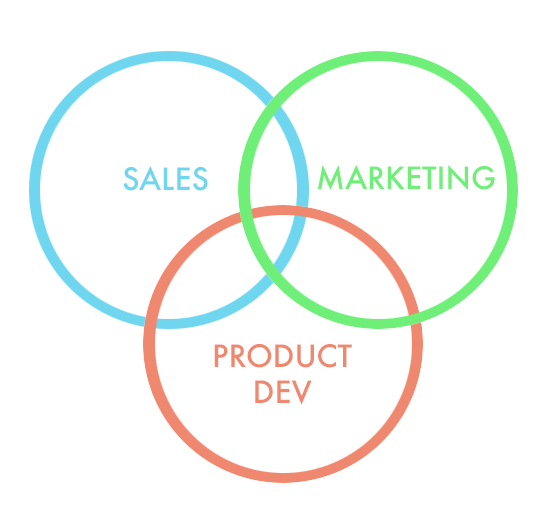
In a highly competitive and crowded market like the WordPress ecosystem, it’s absolutely vital to engage in some kind of marketing for your WordPress plugin or theme if you want to see any growth in your business. If you constantly focus on building your product, you won’t build your business because you won’t get new users.
In his best-selling book “Traction: A Startup Guide to Getting Customers”, Gabriel Weinberg references The Product Trap: “the fallacy that the best use of your time is always improving your product.”
In a highly competitive and crowded market like the WordPress ecosystem, it’s absolutely vital to engage in some kind of marketing for your WordPress plugin or theme if you want to see any growth in your business.
You can’t have a successful WordPress plugin or theme as a product-only activity. You need to discover and reach users who need your product, usually those experiencing a specific issue your product addresses. You should engage with them, hear their feedback, and use it to improve your product.
Connecting with your customers gives you the opportunity to educate them on how to use your product, show them the benefits, and differentiate yourself from competitors. That’s the role of marketing in a nutshell.
Let’s talk about digital marketing channels available to WordPress businesses and how to leverage basic marketing strategies to take advantage of each one.
Digital Marketing Channels
There are many possibilities to attract new users to a WordPress product. Specifically, you can leverage:
- Content Marketing
- Social Media Marketing
- SEO
- Paid Advertising/SEM
- Affiliate Marketing
- Email Marketing
- Viral Marketing
- Influencer Marketing
Are they all effective marketing channels? Absolutely – they’re tried and true. But how can you be sure you’re using these channels to their fullest potential for your business situation?
Inbound Marketing vs. Outbound Marketing
Before we dive into the details of different channels, let’s differentiate between the concepts of inbound and outbound strategies, used both in marketing and sales.
Outbound marketing includes actions you take to try to convince potential customers to buy your product, usually meaning paying for clicks, impressions, reviews, or other ‘spots’ on the internet.
Outbound marketing channels tend to have an associated cost and far different conversion rates than inbound marketing.
Most WordPress businesses don’t need to pursue these strategies in the earlier business stages or even at all to become successful. These strategies can be useful in many situations, but they require financial resources which many startup businesses don’t have.
So, for the purposes of this article, we’ll focus on inbound marketing.
Inbound marketing allows you to share knowledge and information about your product while engaging with your community. This means creating a blog, focusing on SEO, posting on social media, and other organic forms of sharing your business with the world – without having to pay for clicks or impressions.
In action, the difference is that instead of going to your customers, you can get your customers to come to you. As Jayson DeMers explains, the goal of inbound marketing…
“…is to build your brand up to a certain level of reputation and visibility that customers naturally find you when they execute their ability and right to research their purchasing decisions. It’s the difference between trying to shove a quarter in someone’s pocket and placing a shiny quarter directly in their path for them to find naturally and less obtrusively.”
Inbound Marketing vs. Outbound Marketing: instead of you going to your customers, you can get your customers to come to you.’
The most effective marketing is not perceived as a marketing message, which means that users aren’t looking at paid ads or any information that clearly tries to convince them to use a product.
Here’s a great chart that shows how the conversion process works for inbound marketing vs outbound marketing:

With the tools available on the Internet today, you can easily get started with basic inbound marketing tactics for free all on your own. For WordPress businesses just starting out, this may be the best way to go because it only requires your time and no financial resources.
A long-term marketing strategy that guarantees results isn’t easy to implement, though. The guide below can positively impact your marketing and will cost you very little if you choose to implement it.
The most effective marketing is not perceived as a marketing message.
Note: Whether you’re a well-established WordPress business or you’re aiming to grow, don’t be afraid to enlist additional support in your marketing efforts.
There are plenty of people you can learn from – colleagues, mentors, contractors who are experts in their fields. You can also hire marketing consultants to show you how to take your marketing to the next level whether you pursue inbound or outbound marketing strategies.
So, what digital marketing channels are the most effective for an inbound marketing strategy focused on selling WordPress plugins or themes?
We’ll use an example to answer this question:
Think of an eBook, like “The WordPress Plugin Business Book”, which you can download for free, compared to a banner ad on top of a website. The eBook is a perfect example of inbound marketing: it’s targeted to readers’ interests, it’s unobtrusive, and a two-way communication process because the visitor can decide whether they want to know more about it (they’re not “forced” to opt in).
With the banner ad, the opposite applies: these are usually targeted to all visitors of a given website, as opposed to specific segments. Banner ads are intrusive and only offer one-way communication, as the site owner slaps you in the face with the ad, ignoring whether you are at all interested in their product. The information on the website where the ad is placed may not even be relevant to what the advertisement is about, meaning that you may be less likely to hit your target market.
Inbound marketing — like the eBook example above — often proves to be more effective because it’s all about earning the attention of your prospective customers organically, without interrupting their path on a website.
If you focus on inbound marketing strategies, like building your SEO rankings, sharing educational content on your blog, and engaging with users on social media, potential customers interested in your business will find you more easily based on their own research. You’ll also attract people who are intentionally looking for a product like yours.
All WordPress plugin or theme developers should take advantage of inbound marketing because they already have the building blocks to start implementing their inbound marketing strategy. I call these the raw bits of marketing, which I’ll explain in the next section.
Here’s the deal: all WordPress plugin or theme developers should take advantage of inbound marketing because they already have the building blocks upon which they can start implementing their inbound marketing strategy – @matteoduo.
What Are The Raw Bits Of Marketing?
Every WordPress plugin or theme developer has “raw bits” of inbound marketing content already under their belt. What they’re struggling with is how to tie this content into a cohesive narrative.
Let me explain these raw bits of marketing content and how to use them
As a WordPress plugin or theme developer, you always have three raw bits of marketing content at your disposal:
- The Pain-Point: Your WordPress product addresses a specific pain point for a segment of users.
- Experience: You have direct experience in helping to overcome specific issues.
- Unique Approach: You have a view and approach to the market different from your competitors.
Now, how can you refine these unique business peculiarities and translate them into inbound marketing material?
Here’s a table showing you how each raw bit of marketing can evolve to be a useful piece of content in your inbound marketing strategy:
| Raw Bits of Marketing | Explanation | Inbound Marketing Example | Content Format |
| The Pain-point | You have a WordPress product addressing a pain point for a segment of users. | Tell a story about a customer who achieved specific goals using your product. |
|
| Experience | You have direct experience in helping to overcome specific issues. | Show prospective users how to do something (awesome) with your product. |
|
| Unique Approach | You have a different view and approach to the market you’re operating in. | Thought Leadership Content |
|
These three raw bits of marketing are equally important to your WordPress business and you should capitalize on each one.
Let’s illustrate through an example how you can start implementing basic inbound marketing activities from one of the raw bits above.
Here’s the context for our example:
- Your WordPress product is a caching plugin.
- You have a segment of users who need to overcome an issue, a limitation, or anything preventing them from achieving what they want. In this example, it’s speed improvements.
Now, based on this single raw bit of marketing (Experience), you have the opportunity to explain how your WordPress plugin can help both existing users and prospective users make their websites faster (as summarized in the table above).
How? By approaching the topic of website caching and speed from different angles and developing unique content, such as:
- Video tutorials on how to enable specific plugin features
- Support page showing how to set up your caching plugin
- A podcast featuring how some of your business partners are using your WordPress plugin
- A blog post mentioning your plugin, entitled: “How to make your WordPress website faster with the right caching plugin stack”
- A landing page with an opt-in form that allows users to download a free guide filled with tips on speed optimization that mentions your plugin as one of the options
- A free monthly webinar featuring subject matter experts explaining how speed is critical for any business
By focusing on creating content using one of the raw bits of marketing you already have at your disposal, like the experience bit, you can start implementing inbound marketing activities for your plugin or theme with little effort.
You don’t have to start with any of the bigger tasks mentioned above. My roadmap below will break it down into even smaller pieces to help you get started in the right way.
The Roadmap for Marketing WordPress Plugins and Themes
Given all the useful information above, how do you actually get tangible results marketing WordPress plugins or themes?
You start by incrementally using your raw bits of marketing to create Minimum Viable Content Assets (MVCs). Then, allocate specific resources towards bite-sized, measurable objectives, like writing a blog post, creating a walkthrough, or generating any other valuable content that your target market will find useful.
Think of the following guide as a roadmap for marketing your WordPress plugin or theme.
Step 1: Create Your Minimum Viable Content (MVC) Assets
For any marketing activity related to your WordPress product, you’re always going to need written content. The idea suggested here is to start by compiling what I call the Minimum Viable Content assets (MVC) for your WordPress plugin or theme.
Specifically, I suggest creating content for the following areas:
- Tagline: 1 line describing your plugin or theme in a unique way
- Short description (no longer than 150 characters)
- Write a longer page explaining what your plugin or theme does by focusing on the benefits of your product for users
- List out all the major concerns and questions you anticipate your users will have (five at least)
- Produce high-quality screenshots of your product with annotations
- Write five cornerstone pages about your product focused on:
- How to set up your product
- How to use it (this is going to be the demo)
- Three specific examples of how to use your plugin or theme
- Write an “About” page that speaks about your customers, not you
- Put together a shared, documented definition of whom you’re selling your WordPress product to (your Ideal Customer Profile)
- Create a clean readme.txt file according to guidelines: example for a plugin, example for a theme
Use Google Docs, or any of your preferred apps, to craft all your content and keep it organized in a folder called “Content Assets” for future reference.
Do you already have your MVC assets stored somewhere? Awesome! Put them in a spreadsheet and analyze whether they live up to the following questions:
- Is the copy talking directly to the users/buyers you’re targeting with your product?
- Is the content up-to-date?
- Are there any typos, grammar errors, or unclear paragraphs?
- Are the screenshots still relevant?
Now that you’ve created all the most important content assets, it’s time to put them to use on WordPress.org.
Step 2: Build Your WordPress.org Page
One of the most powerful tools to market your WordPress plugin or theme is undoubtedly the WordPress.org repository. Here’s where you can find more information about submitting plugins and another page for themes.
Your public-facing page on WordPress.org and how you’re ranked in their search indexing are both generated from your readme.txt file. Luckily, based on the work you already did when creating your MVC assets, you should now have all the right pieces handy to generate this page (text and imagery at the very least).
If you want to go the extra mile with your readme.txt file, you should optimize it for SEO. Vova Feldman, CEO of Freemius, published an amazing guide on improving your rankings on WordPress.org by optimizing your readme.txt.
At the end of the day, the goal is to publish an informative, easy-to-read landing page on the WordPress.org repo with compelling reasons for users to download your WordPress product.
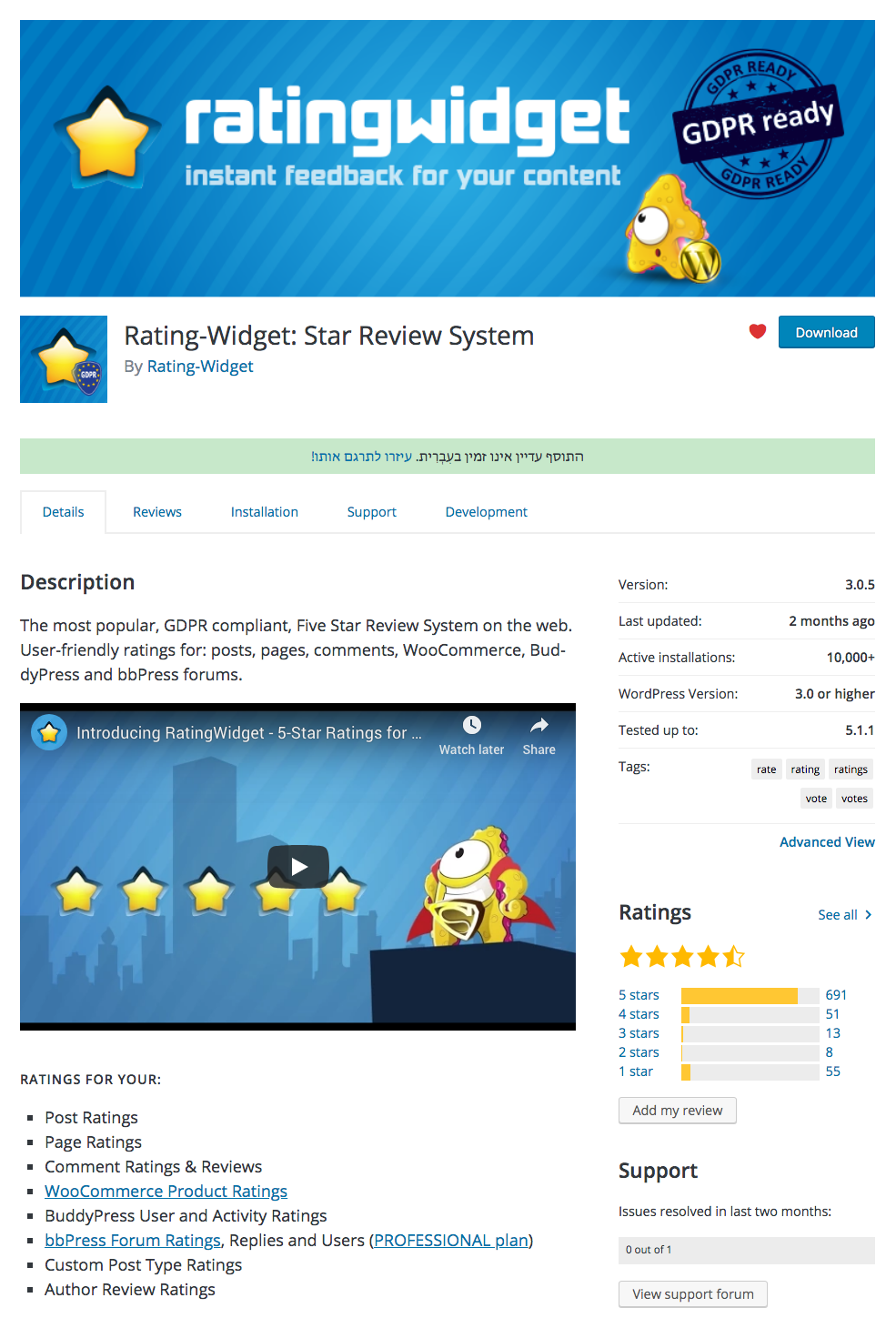
Before submitting content to the WordPress.org repository, don’t forget to double-check these crucial elements of your plugin or theme:
- Is your product name spelled correctly?
- Is your product URL correct?
- Are the images high quality and represent your product to the best of their ability?
- Does the FAQ section address the most common requests you get in support?
- If you already have a website, is it linked from your WordPress.org page with UTMs?
If you already have a plugin or theme live on the WordPress.org repository, congrats! You can use this article in case your current page needs some improvements.
If you’re considering selling products through any paid WordPress marketplace, be aware that each has unique requirements and guidelines for submitting your plugin or theme.
Starting with the MVC assets you already have available and iterating will surely save you time when trying to meet marketplace requirements.
Step 3: Launch Your Plugin Or Theme’s Unique Website
To expand on the simple WordPress.org public-facing listing page or any marketplace listings, you should build a website for your product or at least a landing page on your company website.
Having a custom website or landing page puts you in full control of content type, format, and length, allowing you to take full advantage of Content Marketing through SEO, blogging, and email marketing.
In short, you have no limitations on how you can market your product through your page. Thanks to your plugin or theme’s unique website and URL, you’ll also be building your brand.
What should your unique website feature?
Shoot for a very basic, clean, flat structure that mimics this one:
- Homepage
- Features + Demo page
- Buy/Download page with a short explanatory video to increase your conversion rate up to 80%
- If you have different price tiers/products, make sure your website reflects that on this page
- Support/Documentation
For your website’s home and pricing pages, don’t forget to feature some social proof, such as:
- Testimonials
- “As featured on”
- Reviews
- Number of users/downloads
- Recent purchase popups, etc.
All of these will increase trust in your brand and simplify the decision-making process for your customers to choose your product.
Position them close to your on-page Call-to-Action (CTA) buttons for a stronger impact. I’m suggesting this because I too often see things like testimonials, for example, shown just above the footer and not being featured at all! This undermines the impact of your page and overall marketing strategy.
Here are a few additional suggestions for your website:
- Add a buy button on your main menu so that it gets the maximum exposure being visible at the top of every page on your site
- Set up an easy lead generation flow and checkout process using automated email sequences from the very beginning
Be sure to track and segment your lists so that you’ll have more granular control over the type of automated or manual emails you’re sending. This will allow you to build an open communication channel with different segments of users (both existing and prospective) and communicate with them about:
- Updates on new versions, bug fixes, etc.
- Discounts
- Freebies
- Issues
- Webinars
What’s missing here? Oh yeah, the blog.
Your blog is a powerful tool that requires a long-term strategy to make it an effective marketing asset.
Your blog is an incredibly powerful tool, but it requires a long-term strategy to make it an effective marketing asset.
Since we’re taking a strategic and incremental approach in this marketing roadmap, if you don’t have the resources to invest in regular content marketing and writing blog posts, put the blog on hold for now.
There are other initiatives to take in the meantime but keep in mind that putting your blog on hold should be temporary. Without an ongoing flow of new content, you’ll be missing out on SEO traffic, and you won’t have fresh content to educate your users on how to use your product (which is also a convenient way to address frequent requests coming to support).
These are just a few of the biggest issues you’ll face without an active blog, and it can ultimately be a huge opportunity lost if you don’t start telling the world about your product.
Step 4: Strategically Re-prioritizing Your Marketing Efforts
If you’ve come this far, you should have built the primary marketing components for your WordPress plugin or theme business: MVC assets, public-facing page on WordPress.org, and a unique website.
At this stage, you might start wondering: “How can I be sure I’m maximizing the ROI of my marketing priorities and make sure these activities regularly generate new customers?”
The answer is: you need a system. You should have some kind of process that helps you prioritize your marketing efforts and carry them out consistently and effectively.
#1 Define Your Vision, Goals, Objectives, and KPIs
Evaluate your marketing efforts and establish a long-term approach to your marketing strategy. The guidance above is strongly recommended for all WordPress plugins and themes using the freemium business model. After you’ve completed those objectives, you can take a step back and formalize your approach from top to bottom.

Establishing the vision driving your business is the top of the Marketing Pyramid (and hence the first step). This is the profound reason your business is born—the “Why,” as Simon Sinek perfectly explains in his remarkable TED talk. If you can define your vision clearly, it helps keep your goals oriented in the right direction.
The next level of the pyramid, marketing goals, can be described as “top-level broad goals to show how the business can benefit from digital channels.”
Some examples of marketing goals for your WordPress product could be to:
- Increase profits
- Grow brand awareness
- Enter new marketplaces
- Reach new audiences or demographics
For you to reach your goals, you need to define tangible marketing objectives that will work as specific targets for your marketing activities. They are tasks you need to achieve to meet your marketing goals, but they don’t necessarily have specific and measurable numbers attached to them that can help you gauge your ROI.
Some examples of marketing objectives for your WordPress product could be to:
- Start releasing regular blog posts
- Make walkthrough videos for every aspect of your product
- Create social media accounts on relevant platforms
Last but not least, we have marketing KPIs (Key Performance Indicators). These are the metrics you’ll use to measure progress toward your objectives and gauge the overall success of your marketing efforts.
Some examples of marketing KPIs for your WordPress product could be:
- Number of downloads
- Conversion rates
- Search traffic
- Email signups
- Customer Lifetime Value (CLV)
As some of your goals might change in the future, you’ll want to continuously measure your KPIs so you can track them over time.
At the bottom of the pyramid, we have the source of your KPIs—data—the metrics and measures of all your marketing efforts. Let’s discuss how to capitalize on that data.
#2 Narrow Your Marketing Goals And Objectives Using Data
When it comes to marketing, using data means gathering all the data points you have in a single place — usually a spreadsheet — and diving deep into them.
What data am I referring to?
From WordPress.org:
- Traffic from your WordPress.org page to your site
- Number of downloads
- Number of active installs
- Number of reviews on WordPress.org
- Average rating
- Number of support tickets received, closed, and still open
From your website:
- Sessions
- Users
- Conversion rates to download/purchase
- Best-performing landing pages
- Top exit pages
From your email marketing tool:
- Number of contacts (if available, based on their lifecycle stage)
- Conversion rate from email subscribers to download/purchase
This list is far from exhaustive, as there can be many other data points to look into and add to your audit file.
There are no automated tools to easily measure all of the data you can collect about your WordPress product, but collecting this data is critical to accurately measuring KPIs. Some tools can help automate the data collection process, like the analytics & usage-tracking capabilities supported by Freemius that allows you to track installs, receive deactivation feedback, and more.
Combining this with the other data sources mentioned above will give you enough information to create accurate KPIs.
#3 Prioritize Your Most Important Marketing Activities
Based on all this information, how do you finally prioritize each marketing objective?
One option is to take advantage of a marketing prioritization matrix. Prioritization matrices are common frameworks to help you compare the tasks on your backlog and/or to-do list.
One of the most famous is the Eisenhower Matrix:
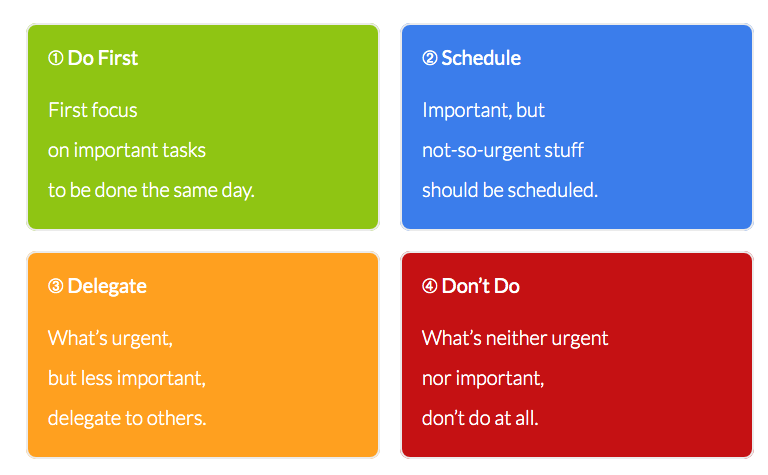
By evaluating your marketing tasks against a rigid matrix, you’ll start building much better prioritization habits. This table should not be the only benchmark you follow, but it can be useful.
Here’s another useful example where the items with the highest impact and lowest effort can be prioritized:
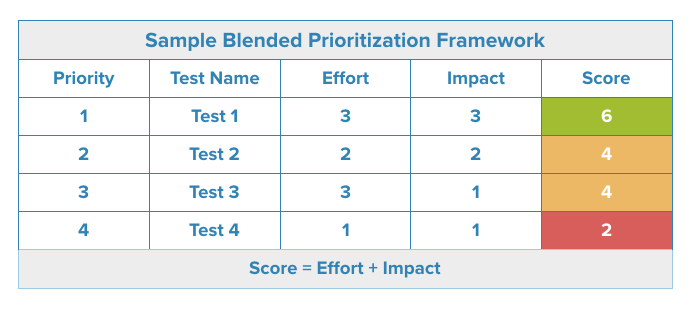
Let’s now circle back to your primary business challenge.
How can you be sure you’re investing your resources in marketing priorities that will provide a reasonable ROI?
- Clearly define your business vision and goals
- Define your marketing goals and objectives
- Consistently measure data to inform your KPIs.
- Embrace a systematic approach toward prioritizing your marketing objectives
By following this strategy, you’ll start to become more focused on real marketing priorities and measure their impact on your business, adjusting your strategy accordingly.
Wrapping up
Marketing is difficult for both large and small WordPress businesses, but it’s very possible to use what you already have at your disposal – the raw bits of marketing and your unique business traits that only you can bring to the table:
- The Pain-point
- Experience
- Unique Approach
These can easily be turned into meaningful marketing content. Think of them as the atoms you’d combine, further develop, and enrich to give life to your MVC assets and, ultimately, your entire inbound marketing strategy.
Is this all that is needed to market your WordPress plugin or theme properly?
Definitely not – there are plenty of the best practices that can turn this framework into an even stronger approach. The Roadmap above contains just a few of the many activities that will help grow your WordPress business, and they’re a great starting point.
Now, it’s up to you: how will you execute your marketing plan?
Still not sure how to move forward? Get in touch with the Freemius experts to get a free 15-minute consultation!





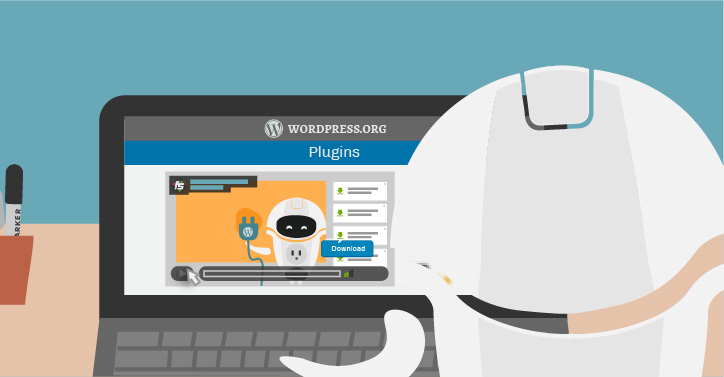


Hi Matteo,
It is true that most theme and plugin developer are primarily focused on building great products. They come with a mindset that great products will sell themselves. However reality is that there is a lot of competition. Daily number of theme and plugin developers are increasing on daily basis.
It is really important that developers put a lot of effort on marketing their products. Setting up a blog, starting a email campaign is just the basics. Apart from product development the developers should also focus on marketing of their products. Marketing is the most ignored part and developers will realize the importance of marketing after their hands are burnt.